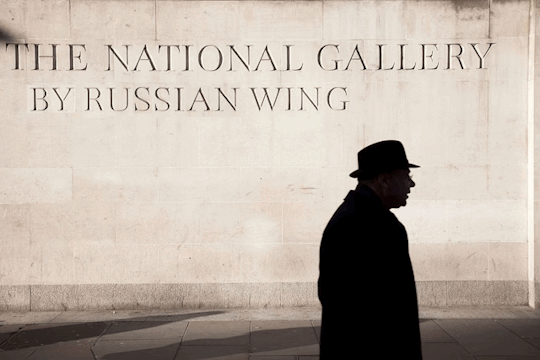#InstitutionalFoundations
Explore tagged Tumblr posts
Text

"Building Narratives: Sainsbury Wing, Avant-Garde Anagrams, and the Echoes of Conflict"
In recent years, the National Gallery witnessed a transformative addition, the Sainsbury Wing, conceived by postmodernist architects Robert Venturi and Denise Scott Brown. Erected in 1991, this wing stands as a testament to architectural evolution and houses a remarkable collection of Renaissance paintings. Its origin story traces back to the "Hampton's site," once occupied by a department store obliterated during the Blitz.
The expansion sought prominent architects, triggering a competition in 1982 that saw visionary proposals, including a radical high-tech concept by Richard Rogers. Ultimately, Ahrends, Burton, and Koralek secured the winning design, further modified to include a tower. However, controversy arose when the Prince of Wales critiqued it as a "monstrous carbuncle on the face of a much-loved and elegant friend." This term has endured as a metaphor for buildings that clash with their surroundings.
The initial condition of the 1982 competition mandated commercial offices within the new wing. Yet, a pivotal donation of nearly £50 million from Lord Sainsbury and brothers Simon and Sir Tim Sainsbury in 1985 allowed a revision, allocating the extension solely for the Gallery's use.
Delving into anagrams, 'Sainsbury' intriguingly transforms into 'By Russian,' invoking the avant-garde, a radical movement in Russian modern art from 1890 to 1930. This era, marked by innovation and cultural shifts, finds resonance in the deliberate carving of stone letters within our institutional structures.
However, the narrative takes a contemporary twist as we consider the echoes of the ongoing Ukraine war with Russia. The juxtaposition of 'By Russian' in the context of avant-garde art and architecture prompts introspection. How do our institutional foundations, once influenced by avant-garde ideals, now grapple with the geopolitical complexities of our age? The stone letters, once emblematic of artistic rebellion, now find themselves in a world grappling with the impacts of conflict.
This architectural journey serves as a lens through which we explore not only the evolution of our cultural institutions but also the subtle ways in which art, architecture, and geopolitics interlace, shaping the narrative of our times.
#BuildingNarratives#SainsburyWing#AvantGardeAnagrams#NationalGallery#ArtandArchitecture#CulturalEvolution#Geopolitics#UkraineWar#RussiaConflict#InstitutionalFoundations#ContemporaryNarratives
0 notes